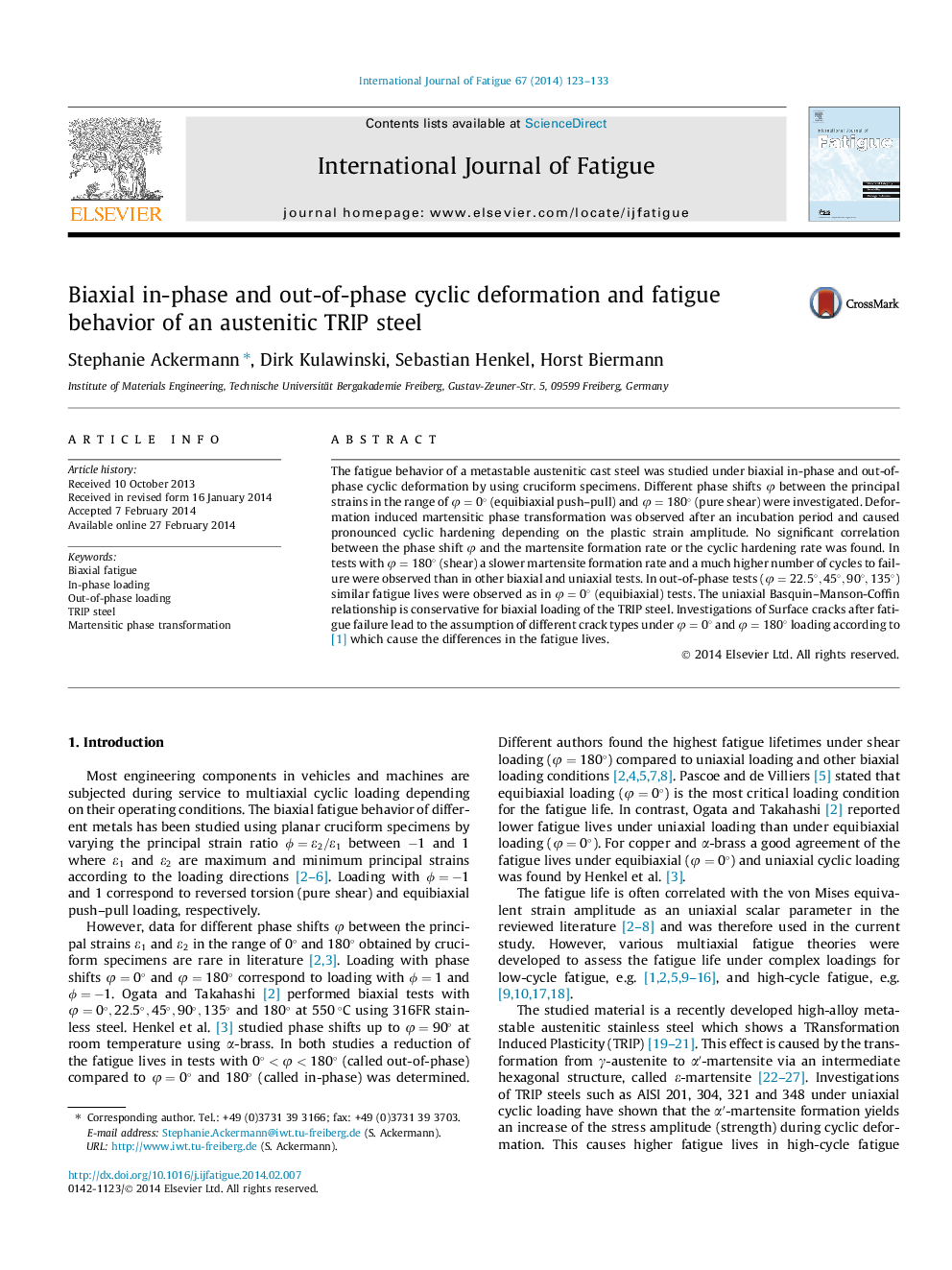| Article ID | Journal | Published Year | Pages | File Type |
|---|---|---|---|---|
| 775213 | International Journal of Fatigue | 2014 | 11 Pages |
The fatigue behavior of a metastable austenitic cast steel was studied under biaxial in-phase and out-of-phase cyclic deformation by using cruciform specimens. Different phase shifts φφ between the principal strains in the range of φ=0°φ=0° (equibiaxial push–pull) and φ=180°φ=180° (pure shear) were investigated. Deformation induced martensitic phase transformation was observed after an incubation period and caused pronounced cyclic hardening depending on the plastic strain amplitude. No significant correlation between the phase shift φφ and the martensite formation rate or the cyclic hardening rate was found. In tests with φ=180°φ=180° (shear) a slower martensite formation rate and a much higher number of cycles to failure were observed than in other biaxial and uniaxial tests. In out-of-phase tests (φ=22.5°,45°,90°,135°φ=22.5°,45°,90°,135°) similar fatigue lives were observed as in φ=0°φ=0° (equibiaxial) tests. The uniaxial Basquin–Manson-Coffin relationship is conservative for biaxial loading of the TRIP steel. Investigations of Surface cracks after fatigue failure lead to the assumption of different crack types under φ=0°φ=0° and φ=180°φ=180° loading according to [1] which cause the differences in the fatigue lives.
